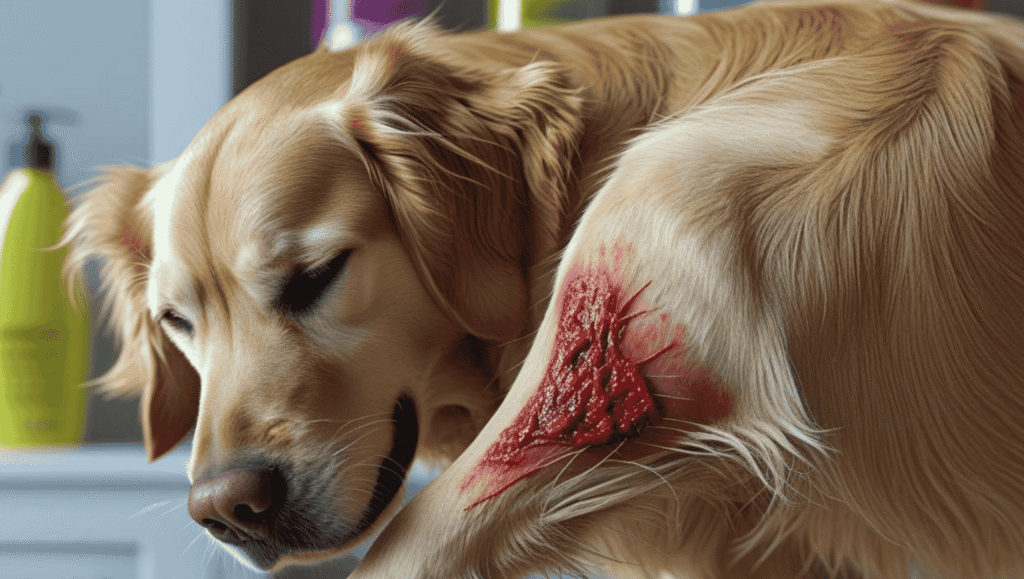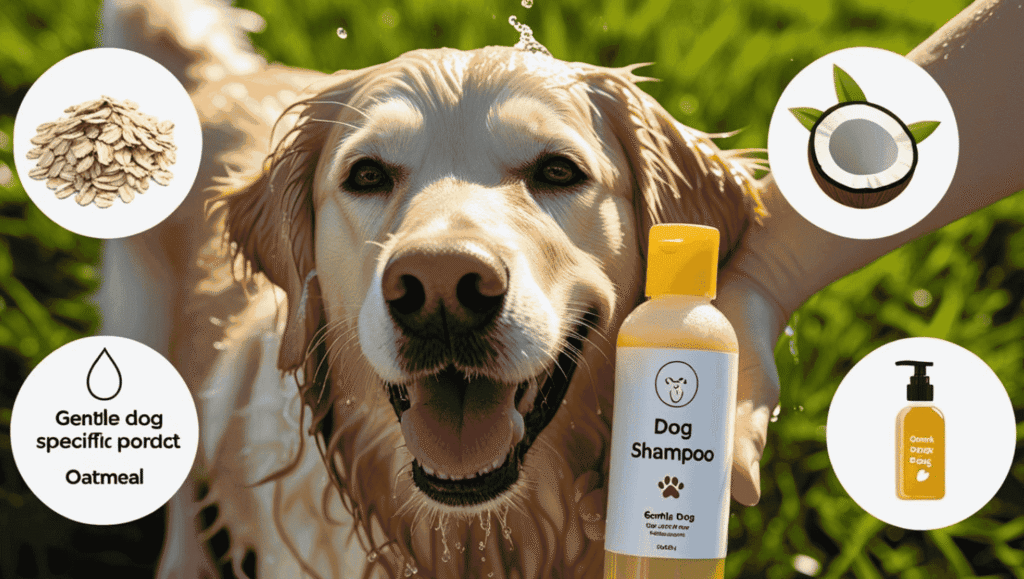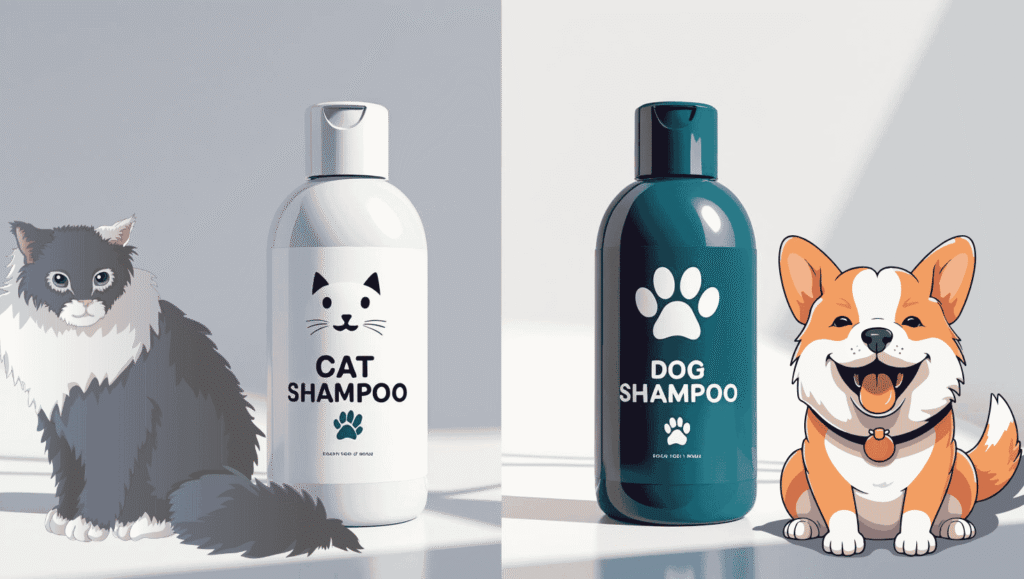Understanding the Difference Between Cat and Dog Shampoos
Cats and dogs might both be lovable, furry pets, but when it comes to their abilities, personalities, and grooming requirements, they’re worlds apart. That’s why cat shampoos and dog shampoos are formulated uniquely. Understanding these differences is essential for every responsible pet owner.
pH Levels: Why They Matter
Dogs have a more alkaline skin pH (around 6.5–7.5), whereas cats have slightly more acidic skin. Cat shampoos are often formulated with a pH balance that aligns with feline skin, and using it on dogs can disrupt their natural skin barrier. This can lead to dryness, flaking, or irritation over time.
Ingredient Variations Between Cat and Dog Shampoos
Cat shampoos tend to avoid ingredients like essential oils or strong fragrances, which cats are sensitive to. However, these shampoos may lack the ingredients needed to combat common dog skin issues, like fleas, ticks, or oily build-up.
Is Cat Shampoo Safe for Dogs?
In short: occasionally, yes — regularly, no. While cat shampoo won’t immediately harm your dog in most cases, it isn’t the best option for their skin health in the long run.
Occasional Use vs Regular Use
If you’re out of dog shampoo and need to clean your pup quickly, a one-time use of mild, unscented cat shampoo may be acceptable. However, regular use can lead to several problems, including imbalance of natural skin oils and bacterial infections.
Common Reactions to Watch For
Look out for the following signs after using cat shampoo on your dog:
- Excessive scratching
- Redness or rashes
- Flaky or dry patches
- Hair loss in specific areas
If you notice any of these symptoms, stop using the product right away and get in touch with your veterinarian for advice.
Pros and Cons of Using Cat Shampoo on Dogs
Pros
- Mild Formulas: Most cat shampoos are gentle and free of harsh chemicals.
- Better Than Nothing: In emergencies, it’s better than using human shampoo or dish soap.
Cons
- Not Tailored for Dogs: Lack of anti-flea ingredients and deodorizing agents.
- pH Mismatch: Can disrupt the protective layer of dog’s skin.
- Potential Allergens: Ingredients safe for cats may not be safe for dogs.

Potential Risks of Using Cat Shampoo on Dogs
Using cat shampoo frequently on dogs can pose serious health risks.
Skin Irritation and Allergies
Dogs may react to the different pH or unfamiliar ingredients in cat shampoo, which can cause:
- Dermatitis
- Persistent itching
- Hot spots
Toxic Ingredients to Avoid
Some cat shampoos may contain pyrethrins, phenols, or other compounds that are safe for felines but toxic to canines. Always check the label before use.
What Happens If You Accidentally Used Cat Shampoo?
Immediate Steps to Take
If you’ve already used cat shampoo:
- Rinse thoroughly with lukewarm water.
- Monitor your dog for 24 hours.
- Apply a dog-safe moisturizer if skin appears dry.
When to Visit a Vet
Contact your vet if:
- Your dog develops a rash or persistent itching.
- Vomiting or unusual lethargy appears.
- You notice any swelling around the face or paws.
Safe Alternatives to Cat Shampoo for Dogs

Dog-Specific Shampoos
Choose shampoos that match your dog’s coat and skin type:
- Hypoallergenic: For sensitive skin
- Medicated: For fungal or bacterial issues
- Deodorizing: For odor control
DIY Natural Alternatives
In a pinch, you can use:
- Oatmeal and water paste
- Diluted apple cider vinegar rinse (avoid open wounds)
- Coconut oil for conditioning
Make sure any homemade solutions are vet-approved or tested on a small skin patch first.
Vet Recommendations on Pet Hygiene
Veterinarians consistently stress the importance of using species-specific products. Dr. Karen Becker, a proactive wellness vet, notes:
“Each animal has a unique skin microbiome. Using the wrong products — even once — can trigger a cycle of irritation and infection.”
(Source: Mercola Healthy Pets)
How Often Should You Bathe Your Dog?
The frequency of bathing depends on:
- Breed: Long-haired breeds may need more frequent washes.
- Activity Level: Dogs who spend more time outdoors may get dirtier.
- Health Conditions: Allergies or skin conditions require specific bathing schedules.
In general, every 4–6 weeks is ideal.
Best Grooming Practices for Multi-Pet Homes
If you have both cats and dogs:
- Store products separately
- Label pet shampoos clearly
- Create individual grooming kits
Never assume one-size-fits-all, even if the ingredients seem similar.
FAQs
1. Can I use cat shampoo on my dog in an emergency?
Yes, for one-time use, but rinse thoroughly and avoid scented or medicated formulas.
2. Is It Safer to Use Baby Shampoo or Cat Shampoo on Your Dog?
Neither is ideal, but baby shampoo (unscented, tear-free) is typically less risky than cat shampoo.
3. What should I do if my dog has a negative reaction to cat shampoo?
Stop using it immediately, rinse thoroughly, and consult a veterinarian.
4. Are there any cat shampoos formulated for both cats and dogs?
Some all-pet shampoos exist, but ensure they’re clearly labeled safe for both species.
5. Can I mix cat and dog shampoo?
No. Combining products may increase chemical interactions or irritation risks
6. What ingredients should I avoid in any pet shampoo?
Avoid parabens, artificial fragrances, sulfates, and phenols — especially if the product is not species-specific.
Conclusion
So, can you use cat shampoo on your dog? Technically, yes — but only in certain uncommon cases. Long-term, it’s best to invest in proper dog-specific grooming products to ensure your pup’s health, comfort, and coat shine. Remember, every pet deserves tailored care, and using the right shampoo is a simple but powerful way to show you care.
# read more posts of dog realeted



